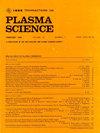Skin Cancer Detection Using Terahertz Metamaterial Absorber and Machine Learning
IF 1.3
4区 物理与天体物理
Q3 PHYSICS, FLUIDS & PLASMAS
引用次数: 0
Abstract
This research aims to propose a terahertz metamaterial-based absorber that can sense the alterations in the enclosing medium’s refractive index. The suggested layout comprises a pair of concentric resonators made of gold, each resembling a ring in shape, and is mounted upon a substrate comprising of gallium arsenide (GaAs). The periodicity of the unit cell in this design is only利用太赫兹超材料吸收器和机器学习检测皮肤癌
本研究旨在提出一种基于太赫兹超材料的吸收器,该吸收器可以感知包围介质折射率的变化。建议的布局包括一对由金制成的同心谐振器,每个谐振器的形状类似于一个环,并安装在由砷化镓(GaAs)组成的衬底上。本设计的单胞周期仅为$48~\mu $ m,在2.47 THz时,达到了61.75的高质量因子(q因子)和近乎完美的99.50%吸收率。参数分析已被执行,以支持在设计中使用的参数的选择。偏振角的改变不影响设计和吸收光谱。由于许多生物医学样品落在这个范围内,因此折射率被调整在1.35到1.39的范围内。利用所提出的传感器,获得了560个不同偏振角、入射角以及正常和癌变皮肤组织细胞标本的吸收光谱。不同的机器学习算法已被用于根据从所提出的传感器获得的吸收光谱对细胞进行分类,准确度为100%,在测试数据上的精度和召回率分别为100%和100%。这项工作可以为未来结合机器学习和太赫兹频率传感的研究铺平道路。
本文章由计算机程序翻译,如有差异,请以英文原文为准。
求助全文
约1分钟内获得全文
求助全文
来源期刊

IEEE Transactions on Plasma Science
物理-物理:流体与等离子体
CiteScore
3.00
自引率
20.00%
发文量
538
审稿时长
3.8 months
期刊介绍:
The scope covers all aspects of the theory and application of plasma science. It includes the following areas: magnetohydrodynamics; thermionics and plasma diodes; basic plasma phenomena; gaseous electronics; microwave/plasma interaction; electron, ion, and plasma sources; space plasmas; intense electron and ion beams; laser-plasma interactions; plasma diagnostics; plasma chemistry and processing; solid-state plasmas; plasma heating; plasma for controlled fusion research; high energy density plasmas; industrial/commercial applications of plasma physics; plasma waves and instabilities; and high power microwave and submillimeter wave generation.
 求助内容:
求助内容: 应助结果提醒方式:
应助结果提醒方式:


